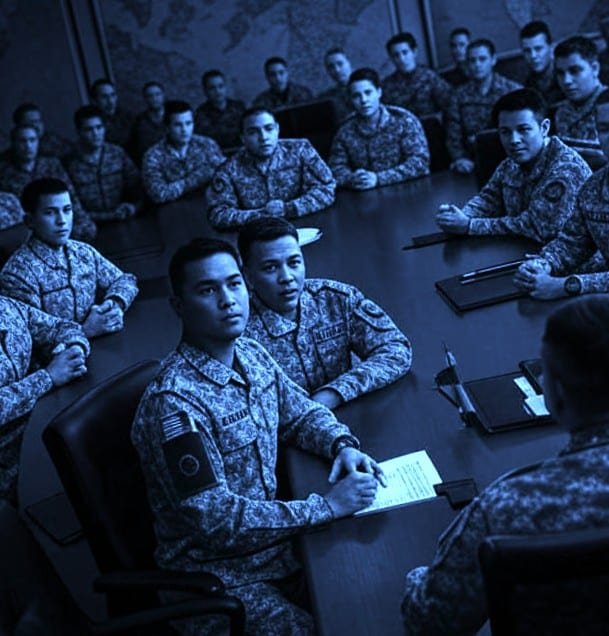Same Game, New Players: How 2025 Mirrors 1925 in Global Power Struggles — and Who’s Set to Dominate by 2030
History doesn’t repeat itself, but it often rhymes. As the world stands at the midpoint of the 2020s, the geopolitical currents resemble a now-familiar pattern from a century ago. Much like in 1925, the world in 2025 is marked by rising revisionist powers, aging hegemons, fractured alliances, and economic instability. The names have changed, but the roles remain eerily similar. This article explores those parallels — from who plays Germany in this century’s drama, to who might be the Poland of 2030, how global conflict might spread (this time through economic warfare), and how emerging power centers like India might alter the trajectory.
Ad Placeholder #1

I. Germany of 1925 — and Its Modern Parallel
In 1925, Germany was a defeated nation reeling from the Treaty of Versailles. Burdened with reparations, economically crippled, and humiliated geopolitically, it seethed with resentment. While outwardly appearing cooperative via the Locarno Pact and the Dawes Plan, inwardly it harbored a desire to reassert its power and rewrite the global order.
Fast-forward to 2025, and Russia echoes many of these conditions.
After the fall of the Soviet Union, Russia experienced its own “Versailles moment” — a perception of betrayal and dismantlement by Western powers. The 1990s left it economically devastated, and while the 2000s under Putin saw some recovery, post-2022 sanctions and the prolonged Ukraine conflict have once again isolated Russia globally. Its economy is increasingly militarized, its political system authoritarian, and its leadership committed to revising the post-Cold War order. Like Germany in the 1920s, Russia in 2025 is playing the role of a wounded power with unfinished business.
The danger lies in what comes next. Germany in 1925 seemed momentarily stable but was preparing for something far darker. If Russia is indeed on a similar trajectory, then the world must brace itself for a more intense and expanded phase of aggression before 2030 — not necessarily via full-scale invasion, but through cyber war, energy disruption, disinformation, and proxy conflicts.
II. The Poland of Tomorrow — First Affected Players and Polarization Lines
In 1939, Poland was the geopolitical fault line — the country caught between two aggressive powers: Nazi Germany and the USSR. It became the ignition point for World War II, not because of its strength but because of its geography and symbolic role.
In 2025, the modern equivalents of Poland could be several places:
- Ukraine is the most obvious candidate — already invaded, already the stage for global polarization.
- Taiwan plays a similar role in the Indo-Pacific — a democratic island being eyed by a powerful neighbor (China), backed by the U.S., yet deeply vulnerable.
- Baltic States (Estonia, Latvia, Lithuania) could also be flashpoints — NATO members, but physically exposed to Russia.
- Georgia or Moldova, like Poland of the past, are strategically located, internally fragile, and politically caught between East and West.
Polarization: The Emerging Blocs
Just like in the 1930s, polarization is hardening:
- Bloc 1: U.S., EU, NATO, Japan, South Korea, Australia
- Economically wealthy, democratic, but aging and bureaucratically slow to act.
- Bloc 2: Russia, Iran, North Korea, with China as a pivot
- Authoritarian, resource-leveraging, willing to take strategic risks.
- Bloc 3: Non-aligned or “swing” powers — India, Brazil, Indonesia, Gulf States
- Will shape the direction of global order by deciding who they cooperate with or resist.
Unlike the 1930s, polarization now includes digital alliances, trade blocks, and technology ecosystems — not just military ones.
Ad Placeholder #2
III. The New Front: Economic Wars and the Multi-Theatre Spread
While the 20th century’s wars were fought with tanks and trench lines, the 21st century is far more likely to see conflict spread through economic disruption, digital sabotage, and hybrid influence campaigns. But just because missiles aren’t flying doesn’t mean the war isn’t spreading.
- Economic Battlefields
- Supply Chains
- The Russia-Ukraine war disrupted energy and grain supplies.
- A Taiwan crisis would devastate the semiconductor industry, bringing global electronics to a halt.
- Currency Wars
- The rise of BRICS+ de-dollarization efforts signals a brewing financial conflict.
- The dollar’s dominance is being challenged by bilateral trade in yuan, rupees, or local currencies — slow shifts, but symbolically powerful.
- Energy Weaponization
- Europe is still reeling from its overdependence on Russian gas.
- The Middle East remains a potential trigger zone — especially with ongoing instability in Israel-Gaza or tensions in the Strait of Hormuz.
- Food & Water Security
- Climate shocks are leading to agricultural disruption across Africa, South Asia, and Latin America — creating conditions for internal unrest and external migration crises.
- Digital and Cyber Fronts
- Nation-states are targeting each other’s infrastructure through cyberattacks.
- Misinformation campaigns are already undermining democracies from within — a modern twist on psychological warfare.
- How It Has Already Spread
- Africa: Russia’s Wagner Group and Chinese investment are turning parts of Africa into a Cold War-style playground again.
- Latin America: Chinese tech and loans vs. U.S. defense partnerships — competition in influence and standards.
- Southeast Asia: Naval militarization, especially in the South China Sea, is slowly drawing countries like Vietnam and the Philippines into strategic calculations.
- Europe: Defense spending is rising dramatically post-Ukraine — Germany and Poland are rearming, NATO is expanding eastward.
This multi-theatre conflict is not a hypothetical future — it is already here, just without a single definitive trigger. But one spark — like a miscalculated drone strike or blockade — could escalate things into a kinetic war, especially in Taiwan or the Baltics.
IV. India and the Third Power Center: The Swing Vote in a Multipolar World
Unlike the 1920s, the 2020s feature a credible third pole in global geopolitics — India.
In 1925, India was a colony. In 2025, it is the fastest-growing major economy, the most populous nation, and a nuclear-armed democracy with growing global trust. India’s role is complex — it is:
- Aligned with the West on technology and trade
- Historically close to Russia on defense
- Economically intertwined with China through BRICS
- Leading Global South voices on equity, climate, and multipolarity
India has avoided hard alignment — choosing instead strategic autonomy. That makes it the swing vote in a world divided between two camps. If India leans toward either the U.S.-led or China-led axis, it could tip the balance of legitimacy, tech ecosystems, and trade routes.
More importantly, India brings civilizational weight — a democratic system, young population, and a cultural model that appeals to many Global South nations weary of both Western lecturing and Chinese control.
In any future conflict — economic or military — India’s position will be pivotal:
- If it joins global sanctions, it could isolate authoritarian actors more effectively than the West alone.
- If it becomes a mediation channel, it could cool flashpoints before they explode.
- If it maintains neutrality, it could emerge as a peace broker and agenda-setter for the post-conflict order.
Conclusion: A Familiar Drama, With a Globalized Cast
The world in 2025 looks a lot like the world in 1925 — anxious, divided, and on edge. But it also has more tools, more awareness, and more global interconnectedness than ever before.
While Russia plays the resentful revisionist, Taiwan and Ukraine are today’s flashpoints, and economic conflict has replaced conventional war as the primary arena, the existence of a viable third power center — India — means the story may unfold differently this time.
The final question isn’t just who plays what role — it’s whether we’ve learned enough from the last century’s script to avoid the same tragic ending.
Ad Placeholder #3
